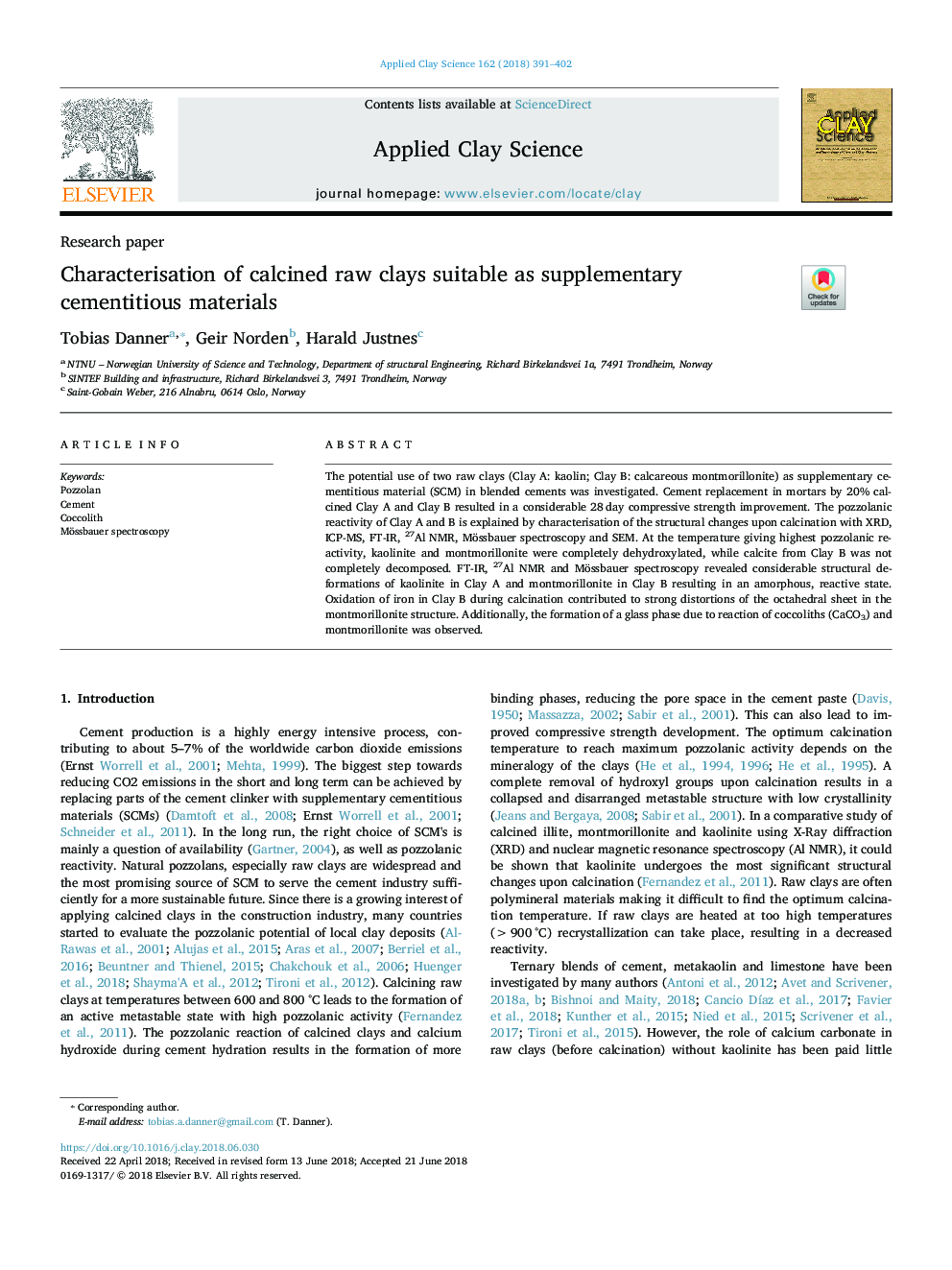| Article ID | Journal | Published Year | Pages | File Type |
|---|---|---|---|---|
| 8045746 | Applied Clay Science | 2018 | 12 Pages |
Abstract
The potential use of two raw clays (Clay A: kaolin; Clay B: calcareous montmorillonite) as supplementary cementitious material (SCM) in blended cements was investigated. Cement replacement in mortars by 20% calcined Clay A and Clay B resulted in a considerable 28â¯day compressive strength improvement. The pozzolanic reactivity of Clay A and B is explained by characterisation of the structural changes upon calcination with XRD, ICP-MS, FT-IR, 27Al NMR, Mössbauer spectroscopy and SEM. At the temperature giving highest pozzolanic reactivity, kaolinite and montmorillonite were completely dehydroxylated, while calcite from Clay B was not completely decomposed. FT-IR, 27Al NMR and Mössbauer spectroscopy revealed considerable structural deformations of kaolinite in Clay A and montmorillonite in Clay B resulting in an amorphous, reactive state. Oxidation of iron in Clay B during calcination contributed to strong distortions of the octahedral sheet in the montmorillonite structure. Additionally, the formation of a glass phase due to reaction of coccoliths (CaCO3) and montmorillonite was observed.
Related Topics
Physical Sciences and Engineering
Earth and Planetary Sciences
Geochemistry and Petrology
Authors
Tobias Danner, Geir Norden, Harald Justnes,
